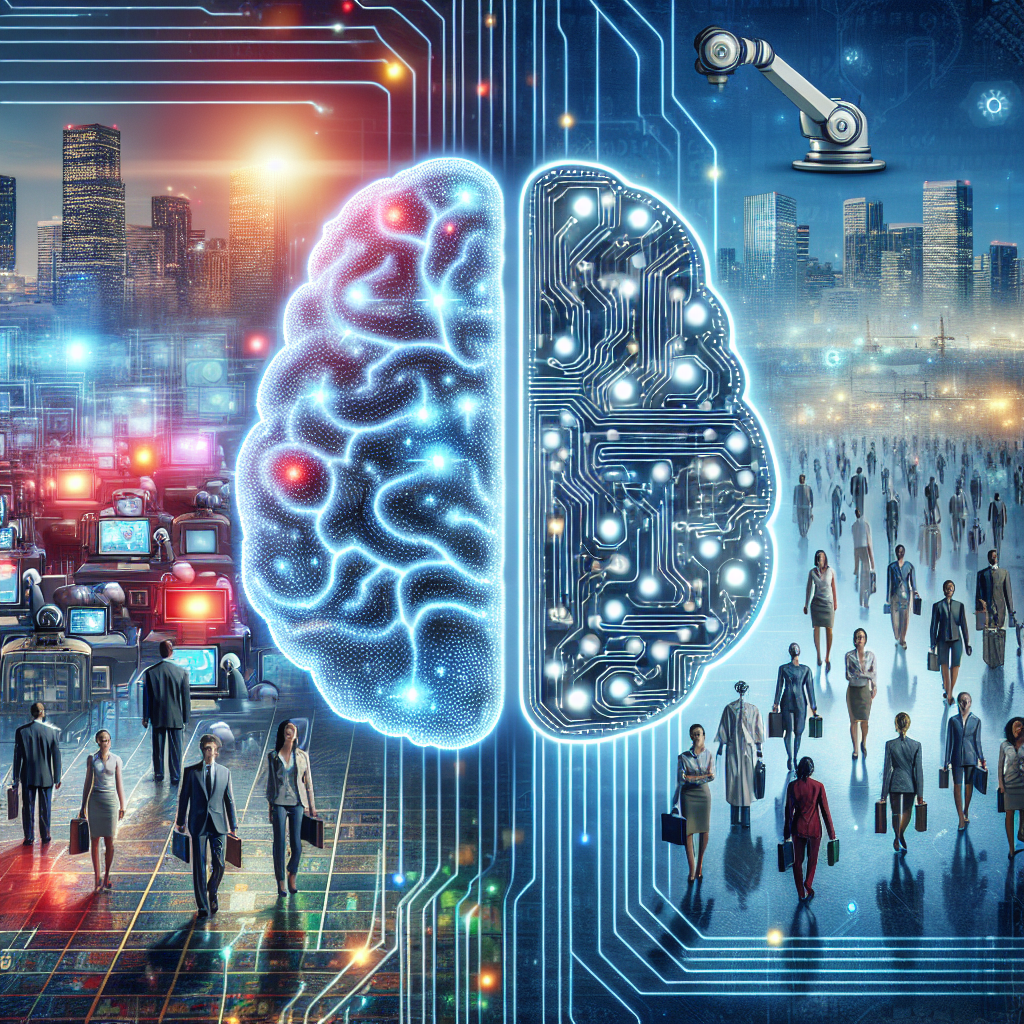The Future of Work with AGI: Are Jobs at Risk?
Artificial General Intelligence (AGI) is a topic that has been gaining more and more attention in recent years. AGI refers to a type of artificial intelligence that has the ability to understand, learn, and apply knowledge across a wide range of tasks, much like a human being. While current AI systems are limited to specific tasks, AGI has the potential to revolutionize the way we work and live.
One of the biggest concerns surrounding AGI is the impact it will have on the workforce. Many fear that as AGI becomes more advanced, it will replace human workers in a wide range of industries, leading to mass unemployment and economic upheaval. But is this fear justified? And what can we do to prepare for a future where AGI is a reality?
In this article, we will explore the potential impact of AGI on the future of work, discuss the risks and benefits it may bring, and look at ways we can mitigate the negative effects of this technology. We will also address some common questions and concerns about the rise of AGI and its implications for the job market.
The Impact of AGI on the Job Market
The potential impact of AGI on the job market is a topic of much debate among experts. Some argue that AGI will lead to mass unemployment as machines take over tasks that were previously performed by humans. For example, AGI could replace workers in industries such as manufacturing, customer service, and transportation, among others.
On the other hand, some experts believe that AGI will create new job opportunities and lead to a more efficient and productive workforce. They argue that while AGI may automate certain tasks, it will also create new roles that require human skills such as creativity, critical thinking, and emotional intelligence.
It is difficult to predict exactly how AGI will impact the job market, as much will depend on how quickly the technology develops and how it is implemented in various industries. However, it is clear that the rise of AGI will bring significant changes to the way we work and live.
Mitigating the Risks of AGI
While the potential risks of AGI on the job market are real, there are steps we can take to mitigate these risks and ensure a smooth transition to a future where AGI is a part of everyday life. One key strategy is to invest in education and training programs that prepare workers for the jobs of the future.
By providing workers with the skills they need to adapt to a changing workforce, we can help ensure that they are not left behind as AGI becomes more prevalent. This may involve retraining workers for new roles, encouraging lifelong learning, and promoting STEM education to prepare the next generation for a world where AGI is a reality.
Another important step is to develop policies and regulations that protect workers and ensure that the benefits of AGI are distributed equitably. This may involve implementing measures such as universal basic income, job guarantees, and worker retraining programs to help those who are displaced by automation.
FAQs
Q: Will AGI replace all human workers?
A: While AGI has the potential to automate many tasks currently performed by humans, it is unlikely to replace all workers. There will always be a need for human skills such as creativity, critical thinking, and emotional intelligence that machines cannot replicate.
Q: What industries are most at risk from AGI?
A: Industries that rely heavily on routine tasks and manual labor are most at risk from AGI, such as manufacturing, customer service, and transportation. However, other industries that require human skills such as healthcare, education, and creative arts may be less affected by AGI.
Q: How can we prepare for a future with AGI?
A: To prepare for a future with AGI, we can invest in education and training programs that prepare workers for the jobs of the future, develop policies and regulations that protect workers, and promote innovation and creativity in the workforce.
In conclusion, the rise of AGI has the potential to revolutionize the way we work and live, but it also brings risks and challenges that must be addressed. By investing in education and training, developing policies that protect workers, and promoting innovation and creativity, we can ensure a future where AGI benefits everyone and creates a more efficient and productive workforce.

